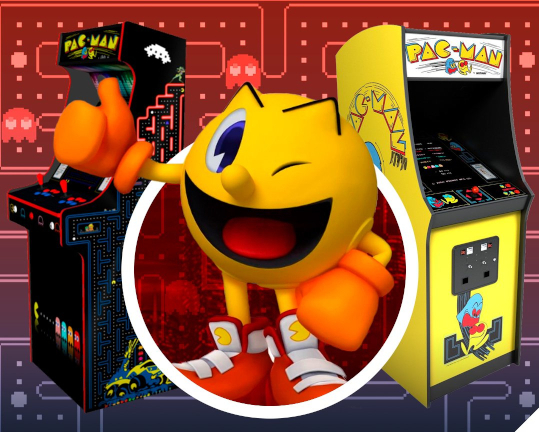Pac-Man: A Universal Video Game Icon
A Pizza Behind a Legend
reated in 1980 by Toru Iwatani, a young developer at Namco, Pac-Man emerged from a simple yet revolutionary idea: to design a game that would appeal to a broad audience, including women. At a time when arcade games were dominated by war and sports themes, Iwatani wanted to offer a friendly and accessible alternative. Legend has it that he came up with the idea for Pac-Man while looking at a pizza! After removing a slice, he noticed a circular shape, perfect for his hero. He also wanted the game to revolve around food, a universal and comforting theme.

The Birth of Pac-Man
The game Pac-Man was released on arcade cabinets in 1980 under the Japanese name Puck Man. When it was exported internationally, its name was changed to Pac-Man to prevent graffiti from altering the “P” into an “F.”
In this game, players control a yellow, circular character navigating a maze. The goal is simple yet addictive: eat all the pac-dots (small dots) while avoiding four colorful ghosts—Blinky, Pinky, Inky, and Clyde. Each ghost has a distinct behavior, requiring players to adopt varied strategies.
Power pellets, located in the four corners of the maze, temporarily grant Pac-Man invincibility, allowing him to devour his enemies. However, beware—the ghosts always return!
The Legacy of Pac-Man
Pac-Man not only defined a genre; it became a cultural phenomenon. With its intuitive gameplay and charming design, it attracted players of all ages. By 1981, it was already regarded as the most popular arcade game in the world.
Toru Iwatani succeeded in creating an experience that transcends linguistic and cultural boundaries. Even today, Pac-Man remains a symbol of the golden age of arcade gaming.

